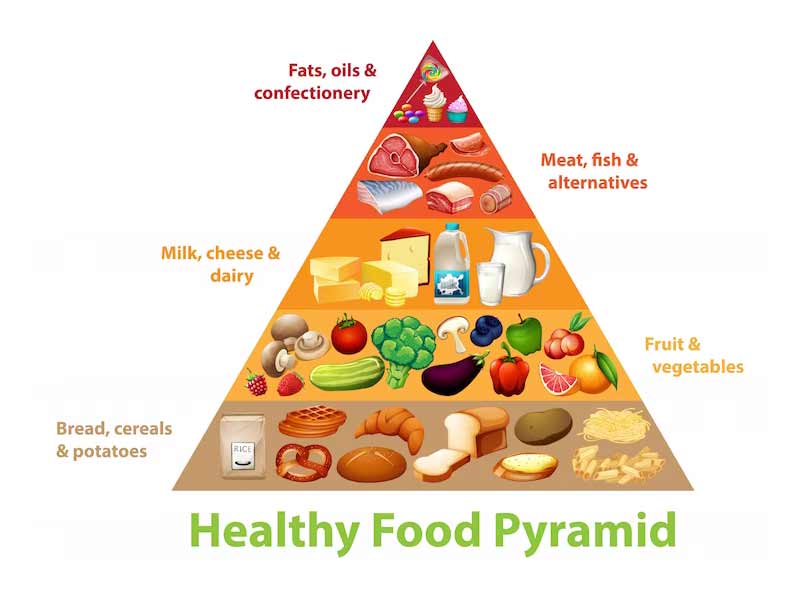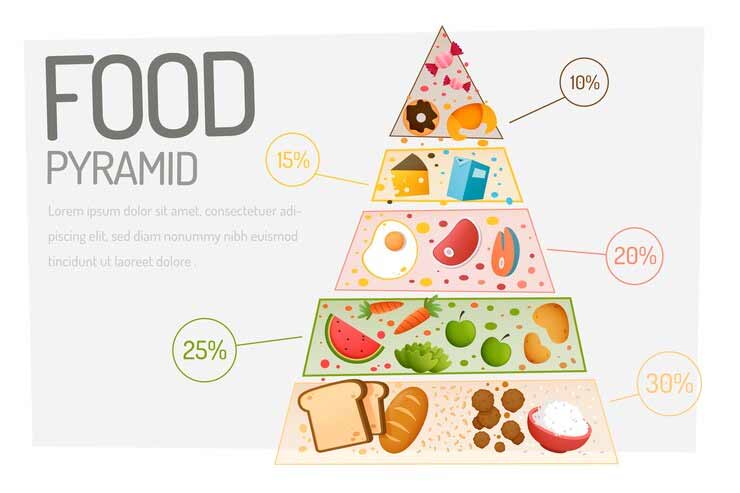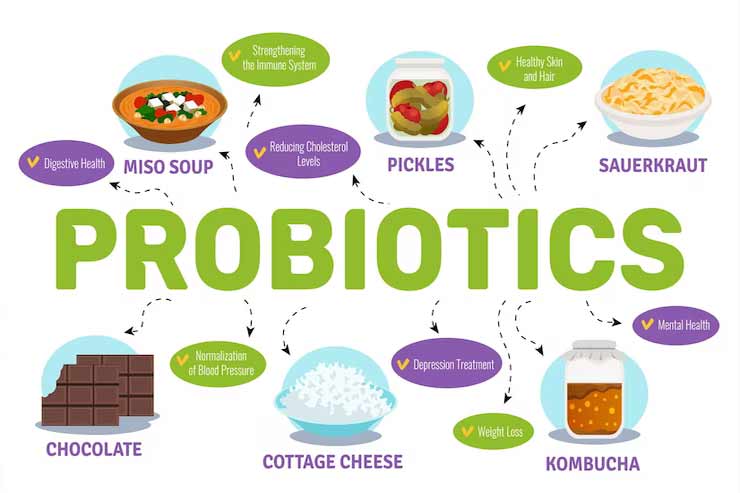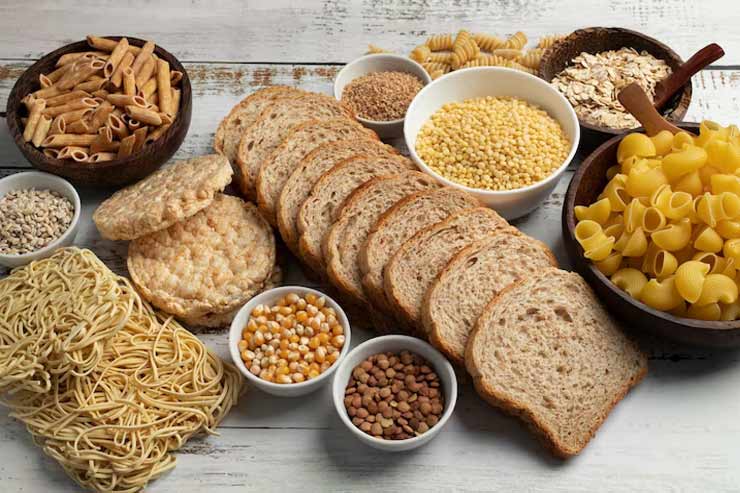Carbohydrates, also known as saccharides, are one of the four major classes of biomolecules essential to all living organisms. They are organic compounds made up of carbon, hydrogen, and oxygen in a specific ratio. Carbohydrates play a critical role in providing energy to the body, as well as serving as structural components of cells and tissues. In this article, we will explore the different types of carbohydrates, their structures, functions, and sources.
Types of Carbohydrates
There are three main types of carbohydrates, based on the number of sugar units they contain. These are monosaccharides, disaccharides, and polysaccharides.

Monosaccharides are simple sugars that cannot be broken down into smaller sugars. They have the general formula (CH2O) n, where n is a number from 3 to 7. The most common monosaccharides include glucose, fructose, and galactose.
Glucose is the primary source of energy for the body and is produced through the process of photosynthesis in plants. Fructose is found in fruits, honey, and some vegetables, and it is the sweetest of all sugars. Galactose is found in milk and dairy products.
Disaccharides are made up of two monosaccharide units linked together. The most common disaccharides include sucrose, lactose, and maltose. Sucrose is commonly known as table sugar and is made up of glucose and fructose. Lactose is found in milk and is made up of glucose and galactose. Maltose is found in grains and is made up of two glucose units.
Polysaccharides are made up of long chains of monosaccharide units. They can be divided into two types: structural polysaccharides and storage polysaccharides. Structural polysaccharides include cellulose, chitin, and peptidoglycan. Storage polysaccharides include starch and glycogen.
Cellulose is the main structural component of plant cell walls and is the most abundant organic compound on earth. Chitin is found in the exoskeleton of insects, crustaceans, and arachnids. Peptidoglycan is found in the cell walls of bacteria.
Starch is the primary storage polysaccharide in plants and is found in grains, legumes, and root vegetables. Glycogen is the primary storage polysaccharide in animals and is found in the liver and muscles.
Structure of Carbohydrates
These items are classified based on their functional groups, which are hydroxyl and carbonyl groups. Hydroxyl groups (-OH) are found in all monosaccharides and some disaccharides and polysaccharides. Carbonyl groups (-C=O) are found in all monosaccharides and disaccharides.

Monosaccharides are classified based on the number of carbon atoms they contain. Trioses have three carbon atoms, tetroses have four, pentoses have five, hexoses have six, and heptoses have seven. The most common monosaccharides are hexoses, with glucose, fructose, and galactose all having six carbon atoms.
The structure of monosaccharides is based on a carbon backbone, with one hydroxyl group attached to each carbon atom except for one, which has a carbonyl group. The carbonyl group can be either an aldehyde or a ketone, depending on its position in the molecule. In aldoses, the carbonyl group is at the end of the carbon chain, while in ketoses, it is in the middle.
Disaccharides are formed by the condensation reaction between two monosaccharides, with the loss of a water molecule. The resulting bond between the two monosaccharides is called a glycosidic bond. The position of the glycosidic bond determines the type of disaccharide formed. For example, sucrose has a glycosidic bond between glucose and fructose, while lactose has a glycosidic bond between glucose and galactose.
Polysaccharides are made up of long chains of monosaccharide units linked by glycosidic bonds. The structure of polysaccharides is more complex than that of monosaccharides and disaccharides. Polysaccharides can have branched or unbranched structures, depending on the type of bond linking the monosaccharides.
The most common storage polysaccharides, starch and glycogen, have a highly branched structure, allowing for rapid mobilization of glucose when needed. In contrast, the structural polysaccharides, such as cellulose, have an unbranched structure, which provides strength and rigidity to cell walls.
Functions of Carbohydrates
These items have a wide range of functions in living organisms. The most important function of carbohydrates is to provide energy for the body. Glucose is the primary source of energy for the body and is produced through the process of cellular respiration. Glucose is transported to the cells through the bloodstream, where it is metabolized to produce energy.

Carbohydrates also play a critical role in the structure and function of cells and tissues. In plants, cellulose provides strength and rigidity to the cell walls, allowing the plant to maintain its shape and structure. In animals, chitin provides strength and protection to the exoskeletons of insects, crustaceans, and arachnids.
Carbohydrates also play a role in the immune system. Peptidoglycan, found in the cell walls of bacteria, is recognized by the immune system as a foreign substance, triggering an immune response. Glycoproteins, which are proteins with attached carbohydrates, are also involved in the immune system. They act as antigens, triggering an immune response when they are recognized as foreign.
Sources of Carbohydrates
These items are found in a wide range of foods, including fruits, vegetables, grains, and dairy products. The recommended daily intake of carbohydrates varies depending on age, sex, and level of physical activity. The World Health Organization recommends that carbohydrates should make up 55-75% of daily calorie intake for adults.

Fruits and vegetables are excellent sources of carbohydrates, as well as vitamins, minerals, and fiber. Whole grains, such as brown rice, quinoa, and oats, are also good sources of carbohydrates and fiber. Dairy products, such as milk and yogurt, contain carbohydrates in the form of lactose.
Processed foods, such as white bread, sugary drinks, and candy, are also sources of carbohydrates, but they are often low in nutrients and high in added sugars. The consumption of these foods should be limited to maintain a healthy diet.
Carbohydrates are essential biomolecules for all living organisms, providing energy, structural support, and playing a role in the immune system. There are three main types of carbohydrates, based on the number of sugar units they contain: monosaccharides, disaccharides, and polysaccharides. Monosaccharides and disaccharides are simple sugars, while polysaccharides are long chains of monosaccharides.
The structure of carbohydrates is based on a carbon backbone, with hydroxyl and carbonyl groups attached to each carbon atom. The most common monosaccharide is glucose, which is the primary source of energy for the body. Carbohydrates can be found in a wide range of foods, including fruits, vegetables, grains, and dairy products.
The consumption of carbohydrates should be balanced and in moderation. Consuming too many carbohydrates, especially simple carbohydrates, can lead to weight gain, insulin resistance, and other health problems. On the other hand, consuming too few carbohydrates can lead to fatigue, weakness, and other health problems.
A healthy diet should consist of a variety of carbohydrates, including fruits, vegetables, whole grains, and dairy products. It is important to limit the consumption of processed foods, which are often high in added sugars and low in nutrients.
In conclusion, carbohydrates are essential biomolecules that play a critical role in the structure and function of cells and tissues, provide energy for the body, and play a role in the immune system. It is important to consume a balanced and moderate amount of these items as part of a healthy diet.
Advancements in Carbohydrate Research
Over the past few decades, there have been significant advancements in the field of carbohydrate research. These advancements have led to a better understanding of the role of these items in living organisms and have opened up new opportunities for the development of new drugs and therapies.

One of the most significant advancements in carbohydrate research has been the discovery of glycosylation. Glycosylation is the process by which carbohydrates are attached to proteins and lipids, forming glycoproteins and glycolipids. Glycosylation plays a critical role in many biological processes, including cell signaling, protein folding, and immune recognition.
Another important advancement in carbohydrate research has been the development of new methods for carbohydrate synthesis. The ability to synthesize complex carbohydrates has opened up new possibilities for the development of new drugs and therapies. For example, the development of new glycomimetic drugs, which mimic the structure and function of carbohydrates, has led to the development of new therapies for cancer, inflammation, and other diseases.
In addition to the development of new drugs and therapies, advancements in carbohydrate research have also led to new technologies for carbohydrate analysis. The development of new methods for carbohydrate analysis, such as mass spectrometry and nuclear magnetic resonance (NMR) spectroscopy, has enabled researchers to better understand the structure and function of carbohydrates.
Challenges in Carbohydrate Research
Despite the significant advancements in carbohydrate research, there are still many challenges that need to be addressed. One of the main challenges in carbohydrate research is the complexity of carbohydrates. Carbohydrates are structurally diverse, and their functions are often difficult to understand. This complexity makes it challenging to develop new drugs and therapies based on carbohydrates.

Another challenge in carbohydrate research is the lack of standardized methods for carbohydrate analysis. There is currently no standard method for carbohydrate analysis, which makes it difficult to compare results between different studies. The lack of standardization also makes it challenging to develop new technologies for carbohydrate analysis.
Finally, there is a lack of awareness and understanding of carbohydrates among the general public. Carbohydrates are often associated with negative health outcomes, such as weight gain and diabetes. However, not all carbohydrates are bad, and they are an essential part of a healthy diet.
Carbohydrates are essential biomolecules that play a critical role in the structure and function of cells and tissues, provide energy for the body, and play a role in the immune system. There are three main types of carbohydrates, based on the number of sugar units they contain: monosaccharides, disaccharides, and polysaccharides.
Advancements in carbohydrate research have led to a better understanding of the role of carbohydrates in living organisms and have opened up new opportunities for the development of new drugs and therapies. However, there are still many challenges that need to be addressed, including the complexity of carbohydrates, the lack of standardized methods for carbohydrate analysis, and the lack of awareness and understanding of carbohydrates among the general public.
In conclusion, carbohydrates are an essential part of a healthy diet and are a fascinating area of research. As our understanding of carbohydrates continues to grow, we can expect to see new opportunities for the development of new drugs and therapies, as well as new technologies for carbohydrate analysis.
Recommendations for a Healthy Carbohydrate Intake
Carbohydrates are an important part of a healthy diet, but it is important to consume them in moderation and to choose healthy sources of carbohydrates.

The following are some recommendations for a healthy carbohydrate intake:
- Choose complex carbohydrates: Complex carbohydrates, such as whole grains, vegetables, and legumes, are a better source of carbohydrates than simple carbohydrates, such as sugar and white flour. Complex carbohydrates are higher in fiber, vitamins, and minerals, and are digested more slowly, which can help to maintain blood sugar levels and prevent overeating.
- Limit simple carbohydrates: Simple carbohydrates, such as candy, soda, and baked goods, should be limited in the diet. These foods are high in calories and low in nutrients, and can contribute to weight gain and other health problems.
- Pay attention to portion sizes: It is important to pay attention to portion sizes when consuming carbohydrates. Eating too many carbohydrates can lead to weight gain and other health problems.
- Choose fruits and vegetables: Fruits and vegetables are a healthy source of carbohydrates, as well as fiber, vitamins, and minerals. They are also low in calories and can help to maintain a healthy weight.
- Limit processed foods: Processed foods, such as chips, cookies, and other packaged snacks, should be limited in the diet. These foods are often high in added sugars and low in nutrients.
- Balance carbohydrates with protein and fat: It is important to balance carbohydrate intake with protein and fat. Consuming a balanced diet can help to maintain a healthy weight and prevent overeating.
- Consult a healthcare professional: It is important to consult a healthcare professional before making any significant changes to your diet, especially if you have a medical condition or are taking medication.
Carbohydrates are an essential part of a healthy diet, providing energy for the body and playing a role in the structure and function of cells and tissues. There are three main types of carbohydrates, based on the number of sugar units they contain: monosaccharides, disaccharides, and polysaccharides.
Advancements in carbohydrate research have led to a better understanding of the role of carbohydrates in living organisms and have opened up new opportunities for the development of new drugs and therapies. However, there are still many challenges that need to be addressed, including the complexity of carbohydrates, the lack of standardized methods for carbohydrate analysis, and the lack of awareness and understanding of carbohydrates among the general public.
To maintain a healthy carbohydrate intake, it is important to consume complex carbohydrates, limit simple carbohydrates, pay attention to portion sizes, choose fruits and vegetables, limit processed foods, and balance carbohydrates with protein and fat. By following these recommendations, individuals can ensure that they are consuming a healthy and balanced diet.

As with any nutrient, it is important to consume carbohydrates in moderation and to choose healthy sources. Consuming too many carbohydrates, especially simple carbohydrates, can contribute to weight gain, insulin resistance, and other health problems. On the other hand, consuming too few carbohydrates can lead to fatigue and nutrient deficiencies.
Overall, the key to a healthy carbohydrate intake is balance. By consuming a balanced diet that includes a variety of carbohydrates, as well as protein and fat, individuals can maintain a healthy weight, prevent chronic diseases, and promote overall health and well-being.
In conclusion, carbohydrates are an essential part of a healthy diet, providing energy for the body and playing a role in the structure and function of cells and tissues. Advances in carbohydrate research have led to a better understanding of the role of carbohydrates in living organisms, and have opened up new opportunities for the development of new drugs and therapies.
While there are still many challenges in the field of carbohydrate research, including the complexity of carbohydrates and the lack of standardized methods for carbohydrate analysis, there is no doubt that carbohydrates will continue to play a critical role in our understanding of biology and in the development of new medical treatments.
For the general public, it is important to continue to learn about carbohydrates and to make informed decisions about their diet. By following the recommendations outlined in this article and consulting with a healthcare professional as needed, individuals can ensure that they are consuming a healthy and balanced diet that includes an appropriate amount of carbohydrates to support their overall health and well-being.
References
- Ercan, D., & Demirci, A. (2016). Carbohydrates and human health. Sugar Tech, 18(1), 1-9.
- Ludwig, D. S., Hu, F. B., Tappy, L., & Brand-Miller, J. (2018). Dietary carbohydrates: role of quality and quantity in chronic disease. BMJ, 361, k2340.
- Hu, F. B. (2011). Globalization of diabetes: the role of diet, lifestyle, and genes. Diabetes Care, 34(6), 1249-1257.
- Higginbotham, S., & Morrissey, P. A. (2016). Carbohydrate analysis in food: a review. International Journal of Food Science & Technology, 51(6), 1206-1217.
- Martínez-González, M. A., Sánchez-Villegas, A., & Martínez, J. A. (2005). The Mediterranean diet and cardiovascular health. Molecular Nutrition & Food Research, 49(8), 795-807.
- Mozaffarian, D., Hao, T., Rimm, E. B., Willett, W. C., & Hu, F. B. (2011). Changes in diet and lifestyle and long-term weight gain in women and men. New England Journal of Medicine, 364(25), 2392-2404.
- Rolls, B. J. (2017). Carbohydrates: their role in appetite regulation and obesity. Current Opinion in Endocrinology, Diabetes, & Obesity, 24(4), 306-313.
- Sacks, F. M., Svetkey, L. P., Vollmer, W. M., Appel, L. J., Bray, G. A., Harsha, D., … & Karanja, N. (2001). Effects on blood pressure of reduced dietary sodium and the Dietary Approaches to Stop Hypertension (DASH) diet. New England Journal of Medicine, 344(1), 3-10.
- Venn, B. J., & Mann, J. I. (2011). Cereal grains, legumes and diabetes. European Journal of Clinical Nutrition, 65(4), 365-377.
- World Health Organization. (2015). Guideline: sugars intake for adults and children. World Health Organization.
- Wolever, T. M. S. (2017). Carbohydrate and sugar restriction: exploring the controversy. European Journal of Clinical Nutrition, 71(3), 317-321.
- Zheng, Y., Ley, S. H., & Hu, F. B. (2018). Global aetiology and epidemiology of type 2 diabetes mellitus and its complications. Nature Reviews Endocrinology, 14(2), 88-98.
- Zimmet, P., Alberti, K. G., & Shaw, J. (2001). Global and societal implications of the diabetes epidemic. Nature, 414(6865), 782-787.
- Venn, B. J., & Mann, J. I. (2004). The effect of a low-fat, high-carbohydrate ad libitum diet on weight loss and blood lipids in overweight subjects with hyperinsulinemia. International Journal of Obesity and Related Metabolic Disorders, 28(2), 259-266.
- Cordain, L., Eaton, S. B., Sebastian, A., Mann, N., Lindeberg, S., Watkins, B. A., & O’Keefe, J. H. (2005). Origins and evolution of the Western diet: health implications for the 21st century. American Journal of Clinical Nutrition, 81(2), 341-354.
- Tappy, L. (2017). Fructose-containing caloric sweeteners as a cause of obesity and metabolic disorders. Journal of Experimental Biology, 220(Pt 16), 2839-2848.
- Tappy, L., & Lê, K. A. (2010). Metabolic effects of fructose and the worldwide increase in obesity. Physiological Reviews, 90(1), 23-46.
- Fardet, A., Rock, E., & Remesy, C. (2008). Is the in vitro antioxidant potential of whole-grain cereals and cereal products well reflected in vivo?. Journal of Cereal Science, 48(1), 258-276.
- Liu, S., Willett, W. C., Stampfer, M. J., Hu, F. B., Franz, M., Sampson, L., … & Hennekens, C. H. (2000). A prospective study of dietary glycemic load, carbohydrate intake, and risk of coronary heart disease in US women. American Journal of Clinical Nutrition, 71(6), 1455-1461.
- Aune, D., Keum, N., Giovannucci, E., Fadnes, L. T., Boffetta, P., Greenwood, D. C., … & Riboli, E. (2016). Whole grain consumption and risk of cardiovascular disease, cancer, and all cause and cause specific mortality: systematic review and dose-response meta-analysis of prospective studies. BMJ, 353, i2716.
- Cho, S. S., Qi, L., Fahey, G. C., & Klurfeld, D. M. (2013). Consumption of cereal fiber, mixtures of whole grains and bran, and whole grains and risk reduction in type 2 diabetes, obesity, and cardiovascular disease. American Journal of Clinical Nutrition, 98(2), 594-619.
- Slavin, J. (2013). Fiber and prebiotics: mechanisms and health benefits. Nutrients, 5(4), 1417-1435.
- Mifflin, M. D., St Jeor, S. T., Hill, L. A
The last word is with you, the audience
Be sure to read other educational articles. For scientific issues, be sure to contact a specialist doctor. These materials are only for study and non-educational purposes. Of course, expert doctors can guide you a lot.
Our cooking training center has collected unique materials for you dear ones. This content is very useful and will help you cook the best and most delicious food for yourself and your loved ones at home.
The recipe section is for introducing the best dishes of the nations. Dear ones, you can see the best dishes in this section and cook whatever you want at home. Don’t forget to read the recipe and ingredients before doing anything to determine your cooking needs.
Soon we will be with you with a more professional team with more facilities. We suggest that if you are overweight, fill out the and wait for our experts to contact you and send you the right meal plan.
The slogan we put on our site is to fight obesity. In this regard, we will provide you with many suitable recipes. Be sure to follow our site to learn about many healthy foods. Do not forget that a healthy life requires extensive changes. One of these changes is changing food. So eat healthy
Please follow us on linkedin. You can learn all best french food recipe and best Italian food recipe and best arabic food recipes and best Iranian food recipes you can check our Reddit page.
